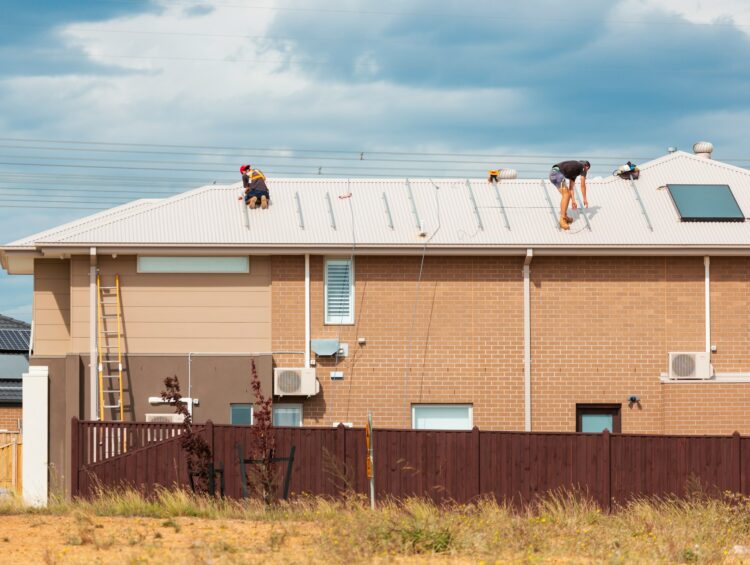Contents
Key Takeaways:
- Analyzing the merits of differing roofing materials to inform selection for new or existing structures.
- Implementing routine roof maintenance to prevent premature wear and prolong lifespan.
- Recognizing the potential and practicality of eco-friendly and technologically advanced roofing options.
Introduction
Securing your home begins at the top. The roofing material and maintenance strategies you choose are paramount to shield your dwelling from the harshness of the elements. It’s essential to consider not only your roof’s aesthetic appeal but also its functional durability. When selecting a roofing company, homeowners benefit from a thorough knowledge of material options and an understanding of the upkeep needed to ensure a roof’s longevity.
Roofing Materials 101
The roofing industry offers a variety of materials, each with distinct advantages and considerations. Asphalt shingles, for example, are renowned for their affordability and broad availability, making them a go-to for many builders and homeowners. On the other hand, metal roofing is gaining traction due to its exceptional lifespan, fire resistance, and energy efficiency. It’s not just about choosing a material; it’s about understanding the trade-offs between cost, durability, maintenance, and environmental impact. The National Association of Certified Home Inspectors illuminates these materials’ typical longevity and features, a boon for homeowners wading through the selection process.
Choosing A Roofing Contractor: What to Look Out For
Properly installing your chosen roofing material is essential to ensure it functions as expected. Entrusting this job to a roofing contractor with verified credentials and a track record of satisfied clients is imperative. When hiring, scrutinize for positive signals like valid licensing, comprehensive insurance, and transparent quotes. While reviews and testimonials offer a glimpse of past performance, nothing beats a direct conversation with the contractor to clarify your project requirements and gauge their professionalism and suitability.
Maintaining Your Roof for Longevity
Maintaining a roof is like keeping a car in good repair; it requires regular attention and prompt action at the first signs of trouble. To minimize moisture buildup, homeowners should watch for missing shingles and signs of water damage and verify that their roof has adequate ventilation. These small, proactive measures can forestall expensive repair work and extend the life of a roof by years. The home improvement experts at This Old House provide actionable maintenance tips to help owners keep their roofs in tip-top shape, thereby maximizing their investment.
Weather Impact and Resistance
Your area’s climate should be a significant deciding factor when choosing the appropriate roofing material. Slate or rubber roofing can provide the best waterproofing benefits in regions with heavy rain. Conversely, materials with a higher fire rating, such as metal or clay tiles, are advisable in areas prone to wildfires. The key to weather resistance is selecting the most suitable material for your specific region, which often requires balancing cost against the level of protection your home needs.
Choosing According to Climate
The climate where your home is situated dictates the weather patterns your roof must withstand. Materials that can withstand harsh sun without fading or degrading, like concrete tiles, may be perfect for sunny locales. At the same time, cedar shingles, which can resist decay in damp environments, might be better in more relaxed, wet climates. Taking the time to match roofing materials to an area’s environmental demands isn’t just smart—it’s also a cost-effective strategy to prevent frequent repairs or premature replacement.
Energy-Efficient Roofing Options
Eco-consciousness is not just a trend; it’s a vital consideration for homeowners who want to reduce their home’s carbon footprint and energy costs. Today’s roofing can be both aesthetically pleasing and functionally energy-efficient. Light-colored or reflective roofs can reduce the heat a building absorbs, translating into actual savings on cooling during hot weather. Additionally, materials like thick insulation or garden-topped ‘green roofs’ help contain heat in colder climates, proving that the term ‘energy-efficient’ encompasses a wide array of clever, adaptable materials and designs.
Revolutionizing Roofing: Innovation Trends
The harnessing of new technologies in roofing materials is leading to unprecedented changes in the industry. Traditional materials aren’t being displaced; more sustainable and multi-functional options supplement them. Photovoltaic (PV) rooftop panels, for instance, not only protect homes from the elements but also generate electricity. Innovations signify a shift towards multifaceted roofing materials that promise enhanced practicality and sustainability.
Roofing Future: Eco-Friendly and Tech Advancements
The roofing landscape is set to evolve further, with green and high-tech solutions at the forefront. The burgeoning trend of eco-friendly materials such as recycled shingles and the innovation of energy-harnessing options like solar tiles represent a dual commitment to practicality and planetary stewardship. Considerations for the roofs of tomorrow are not limited to the immediate needs of shelter and comfort but also necessitate the incorporation of environmentally sound and technologically adept choices.
Embracing Eco-Tech
Adaptation of eco-technologies in roofing is not merely an environmental statement but also a smart economic move. State-of-the-art materials provide a symbiotic relationship between home protection and energy production, allowing homeowners to reduce their dependency on traditional power sources and enjoy the benefits of self-sufficiency. As we progress, these advancements symbolize a more significant shift towards roofs that offer refuge from the weather and act as active participants in home energy systems.





